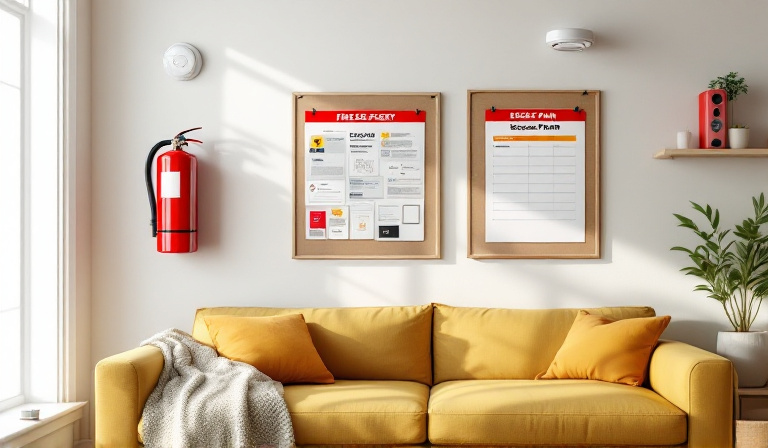
Fire safety is often a matter that gets reduced to the simple installation of smoke alarms in homes and buildings. While smoke alarms are undoubtedly vital, fire safety encompasses a broad spectrum of precautions and practices that go well beyond these devices. Understanding and implementing comprehensive fire safety measures can protect lives, property, and the environment from the devastating effects of fires.
Why Fire Safety Matters
Fires can occur without warning and spread rapidly, causing significant damage within minutes. The importance of fire safety lies in its ability to prevent fires from starting and to ensure a swift and effective response when they do occur. Fire safety is essential for mitigating risks associated with fire hazards, thereby protecting individuals and communities.
Beyond Smoke Alarms: Key Components of Fire Safety
While smoke alarms are crucial for early detection, they are just one part of a comprehensive fire safety plan. Here are other key components that should be considered:
1. Fire Extinguishers
Fire extinguishers are essential tools that can help control small fires before they escalate. It is important to have the right type of extinguisher for different kinds of fires, such as those involving wood, paper, flammable liquids, or electrical equipment. Regular maintenance and proper training on how to use a fire extinguisher can make a significant difference during an emergency.
2. Fire Escape Plans
Having a well-thought-out fire escape plan is vital for ensuring that everyone knows how to evacuate quickly and safely. This plan should include multiple exit routes, a designated meeting point outside the building, and regular drills to practice the escape plan. Everyone in the household or workplace should be familiar with the plan and be ready to act immediately when a fire occurs.
3. Safety Equipment Maintenance
Regular maintenance of fire safety equipment, such as smoke alarms, fire extinguishers, and sprinkler systems, is crucial. Smoke alarms should be tested monthly, and their batteries replaced at least once a year. Fire extinguishers require periodic inspections to ensure they are charged and ready for use. Sprinkler systems should be checked and serviced according to the manufacturer's recommendations.
4. Fire-Resistant Building Materials
Using fire-resistant materials in construction can significantly reduce the spread of fire and provide valuable extra time for evacuation. Materials such as fire-rated doors, windows, and walls are designed to withstand high temperatures and prevent the passage of flames and smoke, protecting critical escape routes and buying time for occupants to get to safety.
Practical Tips for Enhancing Fire Safety
Implementing fire safety measures doesn't have to be complicated. Here are some practical tips that can help improve safety in your home or workplace:
- Regularly Check Electrical Wiring: Faulty wiring is a common cause of fires. Inspect cables and cords for damage and replace any that show signs of wear.
- Practice Safe Cooking Habits: Never leave cooking food unattended, and keep flammable items away from the stove. Install a smoke alarm in or near the kitchen to alert you in case of a fire.
- Store Flammable Materials Safely: Keep flammable liquids, such as gasoline and paint thinners, in appropriate containers and away from heat sources.
- Educate Everyone: Ensure that all members of your household or workplace understand fire safety procedures and know how to use fire safety equipment.
- Limit the Use of Space Heaters: Keep space heaters away from flammable materials and never leave them unattended.
The Role of Technology in Fire Safety
Modern technology plays a significant role in enhancing fire safety. Smart smoke detectors can send alerts to your phone, allowing you to monitor your home remotely. Advanced fire suppression systems can automatically detect and extinguish fires in their early stages. Additionally, smart home systems can integrate with fire safety devices to provide a comprehensive safety network.
Conclusion
Fire safety is a multi-faceted approach that requires more than just installing smoke alarms. By understanding the various aspects of fire safety and implementing practical measures, individuals can create safer environments at home and work. Staying informed and prepared is key to minimizing the risks and impacts of fire-related incidents.

